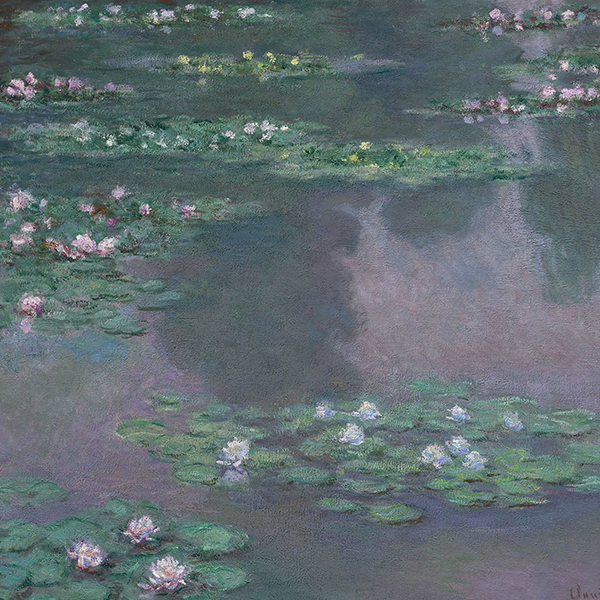Lady with a Parasol
Claude Monet, 1871, Argentuil
“Woman with a Parasol” is part of impressionist history. It is the most famous early works of Claude monet and iconic in its own right. Painted by Monet in Argentuil in late 1871, the painting depicts Camille Monet standing on a hill together with her son Jean. Camille Monet is holding a parasol to shield her from the rays of the son. Both mother and son are looking back down towards Claude Monet as he is painting them.
Classic Impressionism
The painting is classic impressionism. It is done outside with a simple motif and with a clear choice of color over line. This last is obvious in the depiction, as the gentle but visible brush strokes of Monet makes the color of those same brush strokes take precedence over the exact lines of the subject. Mrs Monet’s veil is blown by the wind, as is her billowing white dress; the waving grass of the meadow is echoed by the green underside of her parasol. She is seen as if from below, with a strong upward perspective, against fluffy white clouds in an azure sky. A boy, the Monets’ seven-year-old son, is placed further away, concealed behind a rise in the ground and visible only from the waist up, creating a sense of depth. The brush strokes of Monet in this painting are in fact in some areas larger and more visible than in most other paintings he did. This is especially so in the depiction of the sky and clouds.
The work is a genre painting of an everyday family scene, not a formal portrait. The work was painted outdoors, en plein air, and quickly, probably in a single period of a few hours
The painting was one of 18 works by Monet exhibited at the second Impressionist exhibition in April 1876, at the gallery of Paul Durand-Ruel. The simple, yet life confirming, motive of the painting, along with the excellent execution and harmonious use of colors has made “Woman with a Parasol” among the most beloved Monet paintings. The original can be found on display at the National gallery in Washington D.C.




